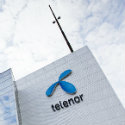A turnaround in India and the launch of a new business in Myanmar have helped Telenor to compensate for the loss of wholesale business in Norway.

Norwegian telecom incumbent Telenor has flagged healthy improvements in sales and profitability for the April-to-June quarter as growth in some key Asian markets, including the new territory of Myanmar, helped offset pressure in Europe.
The operator, which serves about 189 million mobile customers across a number of European and south Asian markets, saw revenues increase by 17.6%, to 30.2 billion Norwegian kroner (US$3.71 billion), compared with the same period last year, while EBITDA rose 11.3%, to NOK10.6 billion ($1.3 billion), over the same period.
Telenor Group (Nasdaq: TELN)'s net income also rose by a sharp 56.7%, to NOK3.6 billion ($440 million), due to an increase in contributions from associates.
The operator still controls one third of VimpelCom Ltd. (NYSE: VIP), a large Russian operator that also maintains subsidiaries in various other parts of the world.
Despite the gains, Telenor's share price was trading 3% lower in Oslo at lunchtime today, the operator having fallen slightly short of analyst expectations.
During an earnings call to discuss results, analysts expressed concern about the Norwegian unit following a contraction in operating profits triggered by a slump in wholesale business and higher marketing costs.
Executives blamed the wholesale setback on the loss of Tele2 AB (Nasdaq: TLTO)'s Norwegian subsidiary as a customer following its acquisition by Telia Company earlier this year.
Owing to good progress in Norway's mobile market, domestic revenues grew by 1.5% compared with the second quarter last year and accounted for slightly more than one fifth of Telenor's overall sales -- making the company far less dependent on its domestic market than many other European operators.
Elsewhere Telenor received a big boost from its fledgling unit in Myanmar, which launched services in late 2014 and generated NOK937 million ($115 million) in revenues in the second quarter.
Telenor's Myanmar business appears to be enjoying greater success than rival Ooredoo , which also launched a network in the country last year, and Telenor CEO Jon Fredrik Baksaas attributed this largely to the different spectrum strategies each player has chosen. (See Ooredoo Profits Tumble Despite Sub Growth.)
"We have decided to move on both 2G and 3G while their offerings have been 3G only, which has different consequences when it comes to market response," he told analysts during the earnings call.
Telenor also witnessed a big improvement in India, swinging from an EBITDA loss of NOK106 million ($13 million) in the second quarter of 2014 to a small profit of NOK24 million ($2.95 million) this year.
Even so, unlike some of India's biggest operators, Telenor has not launched a 3G service and Baksaas indicated it might struggle to satisfy demand for mobile data services in future without this capability.
"Our position is that we don't have sufficient spectrum for a complete data offering down the line," he said. "It's OK now and in 2016 and 2017 but in the longer run it needs to be complemented with spectrum that can offer better bandwidth."
The operator's large Thai business is also a cause for concern, generating 17% of Group revenues in the second quarter.
Fierce competition has forced Telenor to heavily subsidize the sale of handsets and operating profits shrank by more than one third, to NOK550 million ($67.5 million), compared with the second quarter of 2015, despite a 23% rise in revenues.
"There are a lot of things to be done -- in particular with distribution and go-to-market activities," said Baksaas. "We feel we are moving in the right direction but have not reached the level we need in Thailand."
For all the latest news from the wireless networking and services sector, check out our dedicated mobile content channel here on Light Reading.
Telenor CFO Richard Olav Aa also expressed confidence that growth figures in Asia would "pick up" in the second half of the year as investments the operator is making take effect.
Telenor is spending heavily on the rollout of its network in Myanmar as well as on 3G and 4G rollout in Thailand, with overall capital expenditure rising to about NOK5.1 billion ($630 million) in the quarter -- excluding costs related to the launch of a broadcasting satellite -- from about NOK4.8 billion ($590 million) a year earlier.
Telenor is maintaining its guidance for 2015 of 5-7% organic revenue growth and an EBITDA margin of 34-36% and expects to spend between 15% and 17% of revenues on capex.
"Revenue growth is the most volatile part but we will be within range," said Olav Aa. "The margin will be kept stable because of good cost controls and we hope we can be at the higher end of the range in the second half with good execution."
Last year, Telenor reported an EBITDA margin of 35.4%, sales growth of 2.4% and spent 15.8% of revenues on capex.
— Iain Morris, 

 , News Editor, Light Reading
, News Editor, Light Reading
About the Author(s)
You May Also Like











